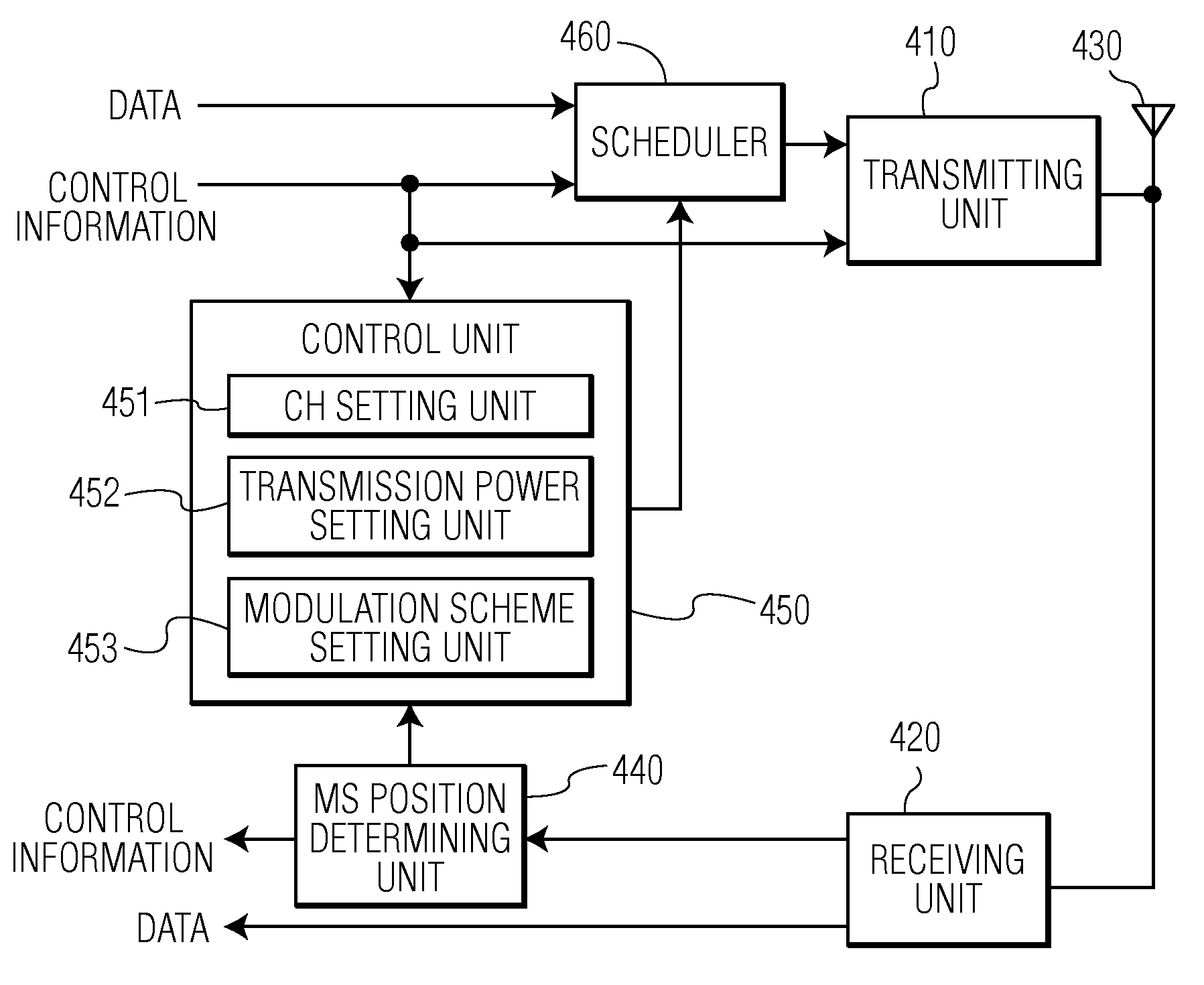Mobile communication system, base station, terminal device, and transmission control method
a mobile communication system and transmission control technology, applied in the field of mobile communication systems, can solve the problems of interference in communication areas, limited number of users that can be accommodated, and interference between adjacent base stations, and achieve the effect of efficient data communication and efficient data communication
- Summary
- Abstract
- Description
- Claims
- Application Information
AI Technical Summary
Benefits of technology
Problems solved by technology
Method used
Image
Examples
Embodiment Construction
[0038]As shown in FIG. 1, a mobile communication system is composed of a base station BS and a terminal device MS, and a cell 100 that is a communication area of the base station BS. The cell 100 can be divided into a cell boundary area 101 and a cell center area 102. In the cell boundary area 101, only a first channel (here, CH1) that is assigned so as not to cause interference with an adjacent base station can be used. In the cell center area 102, the first channel (CH1) and a second channel (CH2 and CH3) can be used.
[0039]The structure of the base station BS according to a first embodiment of the present invention will be described with reference to FIG. 4. The base station BS includes a transmitting unit 410, a receiving unit 420, an antenna 430, an MS position determining unit 440, a control unit 450, and a scheduler 460.
[0040]The antenna 430 receives data transmitted from the terminal device MS. The data is subjected to reception processing such as frequency conversion by the ...
PUM
 Login to View More
Login to View More Abstract
Description
Claims
Application Information
 Login to View More
Login to View More - R&D
- Intellectual Property
- Life Sciences
- Materials
- Tech Scout
- Unparalleled Data Quality
- Higher Quality Content
- 60% Fewer Hallucinations
Browse by: Latest US Patents, China's latest patents, Technical Efficacy Thesaurus, Application Domain, Technology Topic, Popular Technical Reports.
© 2025 PatSnap. All rights reserved.Legal|Privacy policy|Modern Slavery Act Transparency Statement|Sitemap|About US| Contact US: help@patsnap.com



